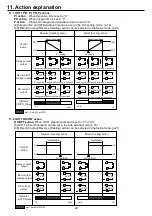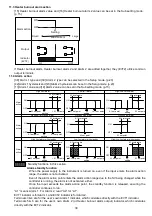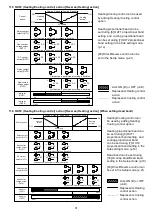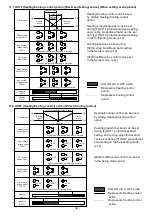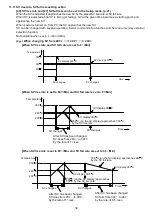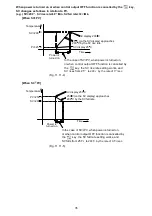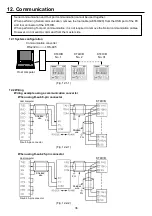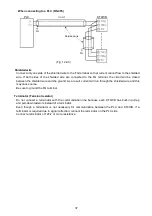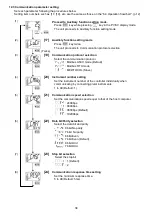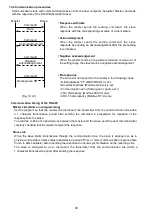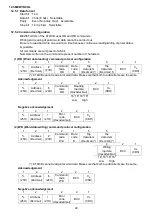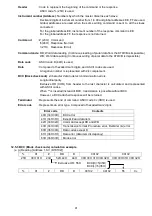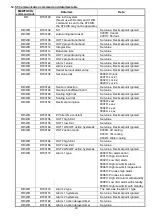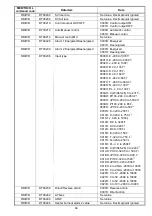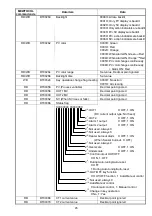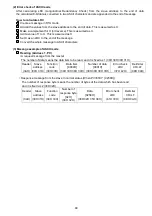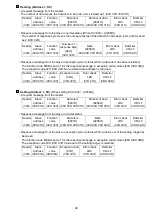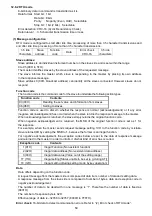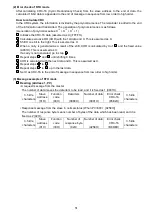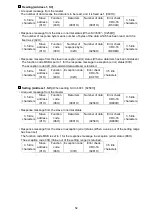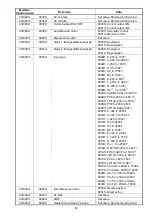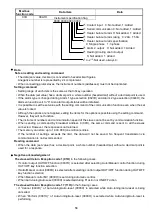
41
Header
: Code to represent the beginning of the command or the response.
ASCII code % (25H) is used.
Instrument number (Address)
: Numbers by which the master discerns each slave.
Decimal 2 digits of instrument number from 1 to 99 and global addresses EE, FF are used.
Global addresses are used when the same writing command is sent to all the slaves
connected.
For the global address EE, instrument number of the response command is EE.
For the global address FF, the response is not returned.
Command
: # (23H) Command
$ (24H) Response (Normal)
! (21H)
Response (Error)
Command code
: RD; Word data reading (Continuous reading of plural data from the KT4H/B is impossible.)
WD; Word data writing (Continuous writing of plural data to the KT4H/B is impossible.)
Data code
: ASCII code D (44H) is used.
Data
: Composed of hexadecimal 4 digits, and ASCII codes are used.
A negative number is represented with 2's complement.
BCC (Block check code)
: 2-character data to detect communication errors.
Longitudinal parity
Exclusive OR (XOR) from header to the last character is calculated, and represented
with ASCII codes.
When ** is inserted instead of BCC, transmission is possible without BCC.
However, a BCC attached response will be returned.
Terminator
: Represents the end of command. ASCII code C
R
(0DH) is used.
Error code
: Represents an error type. Composed of hexadecimal 2 digits.
Error code
Contents
40H (34H 30H)
BCC error
41H (34H 31H)
Except # and data item
42H (34H 32H)
Command except RD and WD
43H (34H 33H)
Transmission format, Procedure error, Delimiter (&) error
60H (36H 30H)
Data codes except D
61H (36H 31H)
Data error (data item discrepancy)
63H (36H 33H)
Mode error
12.5.3 BCC (Block check code) calculation example
(e.g.) Reading [Address 1, SV (DT0102)]
%
01
#
RD
D
00102
00102
25H
30H 31H
23H
52H 44H
44H
30H 30H 31H 30H 32H
30H 30H 31H 30H 32H
Exclusive OR: 55H
BCC(H)=5(35H)
BCC(L)=5(35H)
%
01
#
RD
D
00102
00102
55
C
R



